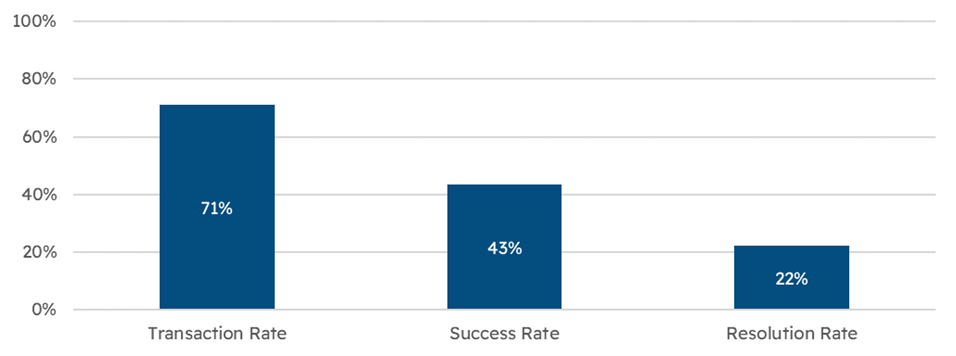The real impact of self-help is too often overstated, and performance not fully optimized.
We rely on self-help, community, and automation to scale service delivery, but there is growing concern that our efforts fall short of its full potential. There are a few key challenges: first, do we have the knowledge resources necessary to resolve as many issues as possible; second, do our measures of self-service effectiveness reflect reality; finally, do we have the right roles, skill sets, and tools.
Let’s start with the good news – customer use of self-help is strong with over 70% of support demand initially serviced through self-help channels. While many self-help transactions provide useful information, only 22% of cases are fully resolved and deflected from assisted channels.

The impact of self-help is often overstated (or worse, not known) and the ability to improve self-help performance is underfunded. Here are a few suggested resources:
- Are you accurately measuring deflection and is your reporting of self-service impact correct? Check out Measuring Self-Service Deflection.
- Want to do better with self-service? Check out Self-Help and Digital Engagement for market leading best practices.





